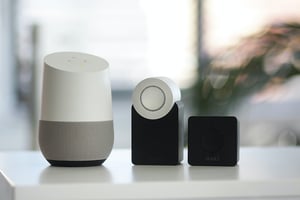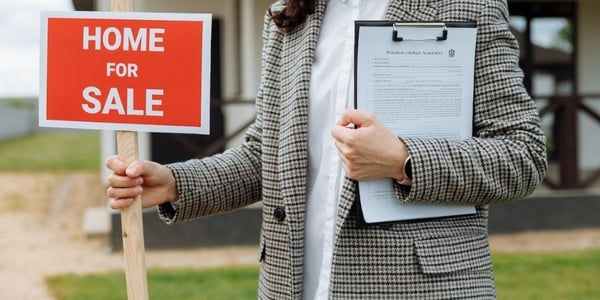Antioxidants, also called free-radical scavengers, are substances that protect our body cells and...
Aging in Place: How to Ensure Your Home Is a Safe Space
Aging in place at home remains the most popular option for senior living. According to AARP, over 75% of age 50+ respondents to a 2018 survey said they would prefer to stay in their own homes. However, as we age, the risks of living at home increase, with the most common being the risk of falling. CDC data shows that 36 million older adults fall annually, resulting in 3 million emergency department visits and over 32,000 deaths.
To reduce falls and other accidents, a home needs to be modified to accommodate older adults' needs. These modifications range from low-cost and straightforward to expensive and complicated. However, any change that makes a home safer may enable the older resident to remain independent longer.
General Home Safety Tips
Falls commonly occur due to tripping or slipping. Many of these hazards can be eliminated by taking simple precautions all around the house:
.jpg?width=300&name=mche-lee-GCdyqIqfGSQ-unsplash%20(1).jpg) Remove smaller area or throw rugs.
Remove smaller area or throw rugs. - Remove clutter in walking areas.
- Move furniture that blocks commonly used walkways. Create more direct paths around the house to reduce tripping risks.
- Move any electrical cords or cables away from walkways. Taping them down will prevent unwanted movement.
- Beware of pets underfoot. Even Joe Biden recently suffered a hairline foot fracture after he slipped on a rug playing with his dog!
- Wear non-slip footwear around the house. For instance, wearing socks without shoes can be surprisingly slippery.
- Add lighting so that no matter the time of day, walkways are always illuminated.
- Replace doorknobs with lever-type mechanisms for easier operation.
Aside from these basic guidelines, it's helpful to consider each area in the house separately for specific modifications.
STAIRS
Stairways present a significant risk to older home dwellers. Alterations vary from simple to elaborate, depending on the resident's budget.
.jpg?width=300&name=stair-lift-1796217_1920%20(1).jpg) Carpet must be securely attached to each step. It may make even more sense to get rid of the carpet and install non-slip material to all stair treads.
Carpet must be securely attached to each step. It may make even more sense to get rid of the carpet and install non-slip material to all stair treads.- Never place objects on stairs. It's a convenient place to set stuff down in some homes, but it makes stairs less safe.
- Install switches for stairway lighting at both the top and bottom landings.
- Make sure existing stair rails are stable and in good repair. Consider adding a rail on the opposite wall as well so both hands can be used.
- Install a stairlift. Driven by an electric motor, this consists of a chair that runs up and down stairs on a metal track. For straight stairs, this option costs around a minimum of $2,000. For curved stairs, costs can be two to three times more.
BEDROOMS
A bedroom might seem like the safest place in the house, but falls can happen there, too.
.jpg?width=300&name=night-light-1424359_1920%20(1).jpg) Adjust bed height so that feet are flat on the ground when sitting on the bed edge. A too-low bed may be difficult to get out of, and a too-high bed could cause falls if it requires hopping off the edge.
Adjust bed height so that feet are flat on the ground when sitting on the bed edge. A too-low bed may be difficult to get out of, and a too-high bed could cause falls if it requires hopping off the edge.- Bedside light switches must be easy to reach.
- Place nightlights to illuminate the path from the bed to the bathroom.
- Nightlights with motion sensors can be used if a continuous light is not acceptable.
- Have a firm chair to sit on when dressing or undressing.
BATHROOMS
Bathrooms are notoriously slippery, even on dry floors. Adding water can make it as slick as ice. Modifications in this room will prevent some of the most severe falls.
.jpg?width=300&name=jon-nathon-stebbe-JAW8aK3ImD8-unsplash%20(1).jpg) Make sure bathroom rugs are low-nap and secured to the floor.
Make sure bathroom rugs are low-nap and secured to the floor.- Wear non-slip footwear in the bathroom.
- Install a rubber mat or non-slip strips on the shower floor.
- Grab bars are a must for showers. Consider putting them near the doorway as well.
- Install toilet safety rails to assist in getting on and off the stool.
- Consider installing a hi-rise toilet.
- Zero-entry showers eliminate the door threshold, a significant tripping risk.
- Walk-in tubs with watertight doors make getting in and out of the tub much safer.
- Install adequate lighting over or near the bathing area.
- A night light in the bathroom will complete the illuminated path from the bed to the bathroom.
KITCHEN
Kitchens have slip and trip risks like other rooms, but reaching for things in cabinets and cooking on hot appliances adds additional risk.
.jpg?width=300&name=ceramic-hob-2470605_1920%20(1).jpg) Go through kitchen cabinets to eliminate little-used items. Rearrange the remaining items within easy reaching distance.
Go through kitchen cabinets to eliminate little-used items. Rearrange the remaining items within easy reaching distance.- Step stools should only be the type with bars for handholds. Use even this type with extreme caution. Call a more able neighbor to help get difficult to reach items. Never use a chair to reach higher up items.
- Consider retrofitting the cabinets with slide-out drawers. Many companies can install these with existing cabinetry.
- Have a stool to sit on during kitchen work. Beware of stools with wheels as these can contribute to a fall.
- Consider changing to flameless cooking to reduce fire risk.
Install single-level faucet handles.
Click here to learn more about safely age-proofing your kitchen!
LIVING ROOM
A lot of time may be spent in the living room or family room relaxing and entertaining. Ensuring these rooms are safe contributes to making the home a comfortable and stress-free environment.
 Getting out of soft, comfy chairs can sometimes be challenging. Investigate models that offer lifting seats.
Getting out of soft, comfy chairs can sometimes be challenging. Investigate models that offer lifting seats.- Many "smart homes" have hit the market in recent years. These allow voice commands to do such things as turn on lighting, set timers, and many other things.
- Too many remote controls for TV and music? Consider consolidating these in a universal remote that handles multiple devices.
OUTDOORS
Many active older adults enjoy outdoor activities around the home, like gardening. Outdoor conditions present their own set of safety risks. Living in a cold climate with ice and snow poses significant fall risks.
.jpg?width=300&name=filip-mroz-TDiWmXb9-qk-unsplash%20(1).jpg) Enjoy low-stress outdoor chores but hire services like lawn or snowplowing for the heavy duties.
Enjoy low-stress outdoor chores but hire services like lawn or snowplowing for the heavy duties.- Take special care with slick driveway and garage surfaces. Merely getting the newspaper or mail can result in severe injury. Ask a neighbor to bring mail to the front door. Subscribe to the online version of the local newspaper to avoid going outside in bad weather.
- Many homes have steps to the house from outside. Even those not using a wheelchair can benefit from a ramp leading up to the house door.
Extending the amount of independent living time at home can be accomplished with some work and cost. Yet, this cost needs to be weighed against the costs of moving to a senior living option outside the home. In the final analysis, it might be less expensive and drive greater satisfaction.
Let us know in the comments below - how do you ensure your home continues to be a safe place through aging?
Learn more on the Housing Resources page.
Related Content:






